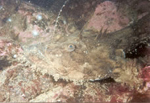marine ecological survey

marine ecological survey |
 |
|
|
EcotoxicologyKey staff within PMS have wide experience in the assessment of impacts industrial effluents may have on the marine and estuarine environment. Precision Marines cold room/aquarium can facilitate in house toxicity assessments through the use of LC/LT50 and EC/ET50 tests or the infield evaluation of a discharge using sentinel species deployed directly into the effluent plume. From such studies the lethal and sub lethal effects of the effluent on marine organisms may be determined.
|
||
  
|
|||
| Precision Marine
Survey Church Farm Main Road Thorngumbald East Yorkshire HU12 9NE United Kingdom Tel 01964 624423 Fax 01964 623352 Email Us |
| Precision Marine Survey Ltd © 2009 VAT REG No. 859 6462 70 |